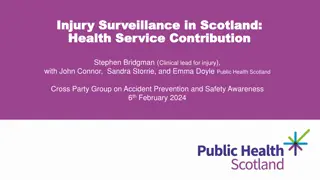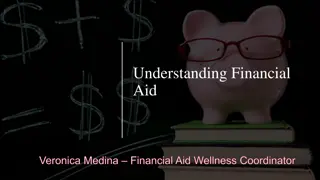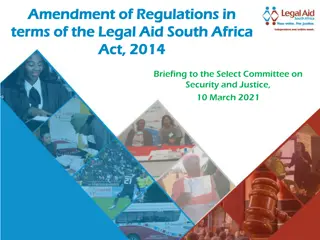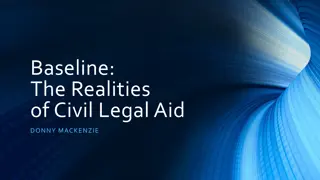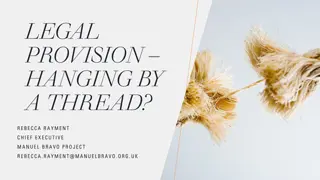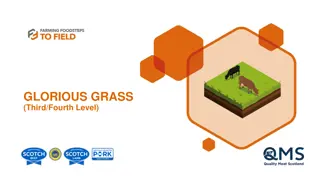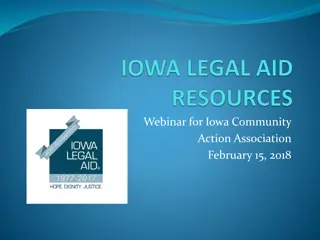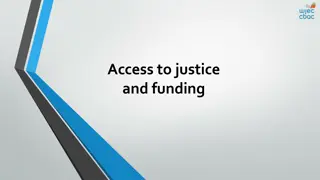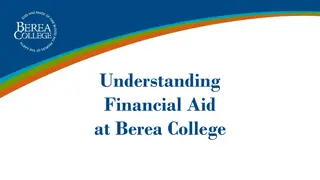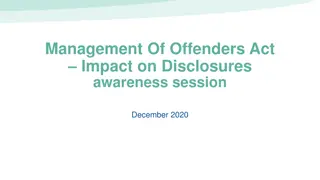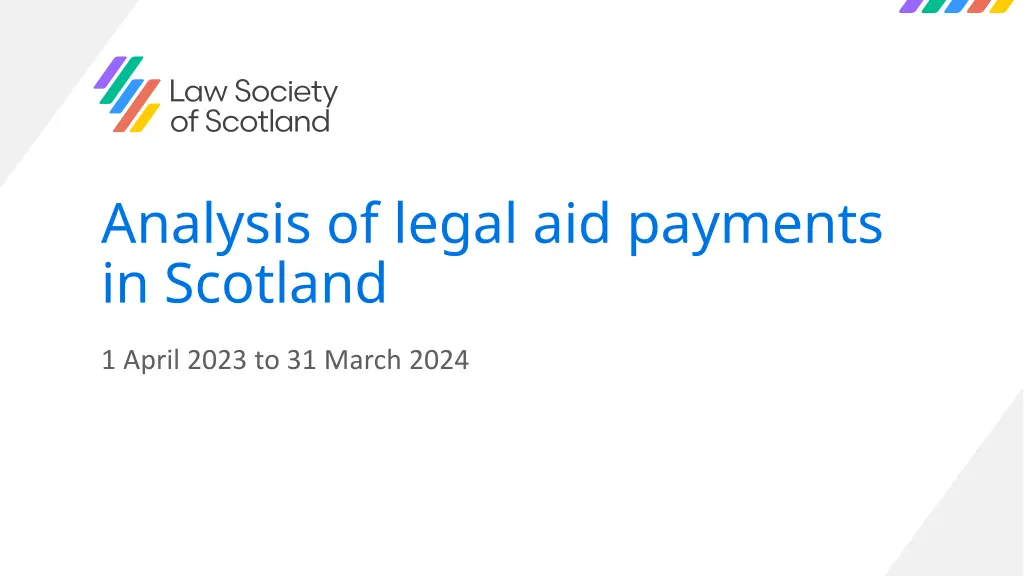
Legal Aid Payments Analysis in Scotland 2023-2024
Explore key findings on legal aid payments in Scotland from April 2023 to March 2024, highlighting the distribution of firms, payment structures, and challenges in access to justice. The report delves into the methodology, data sources, and the impact of rurality on legal aid provisions.
Uploaded on | 0 Views
Download Presentation

Please find below an Image/Link to download the presentation.
The content on the website is provided AS IS for your information and personal use only. It may not be sold, licensed, or shared on other websites without obtaining consent from the author. If you encounter any issues during the download, it is possible that the publisher has removed the file from their server.
You are allowed to download the files provided on this website for personal or commercial use, subject to the condition that they are used lawfully. All files are the property of their respective owners.
The content on the website is provided AS IS for your information and personal use only. It may not be sold, licensed, or shared on other websites without obtaining consent from the author.
E N D
Presentation Transcript
Analysis of legal aid payments in Scotland 1 April 2023 to 31 March 2024
Key Findings Firms providing legal aid services are overwhelmingly located in urban parts of Scotland. In the reporting period between 1 April 2023 and 31 March 2024, approximately 5% of firms were based in non-urban locations, which does not reflect the number of people living in such areas and adds to access to justice issues for these communities. Legal aid work across criminal, civil and family matters was predominantly offered by smaller firms of fewer than 10 solicitors. Firms larger than this accounted for only 6% of Criminal Legal Aid payments. Payment for legal aid services accounts for around one-third of median turnover for firms who were paid by SLAB in the reporting period. This figure was just over a quarter for non-urban firms. These figures show that firms providing legal aid services are predominantly reliant on fee income from private clients.
Data sources and report structure Our member database, which includes individual and practice unit data SLAB's published accounts and payment information Reporting has been structured to minimise the risk of identifying individual practice units Additional data compares the age and gender profile of criminal legal aid solicitors with the Scottish solicitor profession as a whole, in both 2020 and 2024
Methodology Legal aid participation varies Some firms are engaged in criminal, civil and children's legal aid Others are engaged in one or two of these areas A number of firms are on the Society's legal aid lists but do not appear on the SLAB payment list, presumably as they did not submit an account to SLAB for payment To mitigate this, zero returns were excluded in each category
Methodology continued Reporting years SLAB's reporting period each year runs from 1 April to 31 March but firms report to the Society based on their own individual financial year end. This creates inconsistencies, particularly where practice units are rapidly expanding or contracting Rurality The Scottish Government's 8-fold Urban Rural classification is used in our member database. The rurality given to each firm is based on its Head Office address as is its financial returns
Charts: Legal Aid Payments by Rurality Criminal Legal Aid Civil Legal Aid Children s Legal Aid 4.4% 5.4% 4.8% (No rurality 8) 44.3% 48.6% 43.3% 52.3% 46.0% 50.9% Rurality 1 - Large Urban Areas - populations of 125,000 or more Rurality 2 - Other Urban Areas - populations of 10,000 to 124,999 Rurality 3 to 8 Rurality 3 is Accessible Small Towns (settlements of 3,000 to 9,999 people, and within a 30-minute drive time of a settlement of 10,000 or more) to more rural and remote areas (the highest rurality rating is 8).
Charts: Legal Aid Payments by Number of Solicitors in Firm Criminal Legal Aid Civil Legal Aid Children s Legal Aid 4.0% 2.0% 3.0% 6.1% 8.4% 8.3% 33.5% 35.1% 47.0% 47.0% 55.1% 50.5% 1 or 2 solicitors 3 to 9 solicitors 10 to 14 solicitors 15 or more solicitors
Commentary: Legal Aid Payments by rurality Only around 5% of firms that received a payment from SLAB for providing legal aid services were located outwith urban areas of Scotland. Official figures from the National Records of Scotland showed that these areas account for 29% of Scotland's population, highlighting the extent of legal aid deserts as a result of a lack of access to local legal services. Commentary: Legal Aid Payments by Number of Solicitors Smaller firms with fewer than 10 solicitors accounted for the vast majority of legal aid work. Nearly half of criminal legal aid payments were made to solicitors working alone or with only one other solicitor, and these firms accounted for around one third of civil and children's legal aid payments. Succession planning is more challenging for such firms, posing a potential risk for future access to legal aid services.
Charts: Whole Population Median Overall Median Turnover % Whole Population 36.0% Rurality Rurality 1 and 2 37.0% Rurality 3-8 26.0% 0.0% 10.0% 20.0% 30.0% 40.0% 50.0% 60.0% 70.0% 80.0% 90.0% 100.0% Median Turnover % Overall Median Turnover % Whole Population 36.0% Number of Solicitors 1 or 2 solicitors 51.0% 3-9 solicitors 31.0% 10-14 solicitors 9.0% 15 or more solicitors 7.0% 0.0% 10.0% 20.0% 30.0% 40.0% 50.0% 60.0% 70.0% 80.0% 90.0% 100.0% Median Turnover %
Charts: Criminal Median Turnover Criminal Legal Aid Median Turnover % Whole population - all payments 36.0% Rurality Whole population - criminal payments 43.0% Rurality 1 and 2 43.0% Rurality 3-8 (none in 7 or 8) 26.0% 0% 10% 20% 30% 40% 50% 60% 70% 80% 90% 100% Median Turnover % Criminal Legal Aid Median Turnover % Whole Population - all payments 36.0% Number of Solicitors Whole Population - criminal payments 43.0% 1 or 2 solicitors 62.0% 3-9 solicitors 33.0% 10 or more solicitors 23.0% 0% 10% 20% 30% 40% 50% 60% 70% 80% 90% 100% Median Turnover %
Charts: Civil Legal Aid Median Turnover Civil Legal Aid Median Turnover % Whole population - all payments 36.0% Rurality Whole population - civil payments 11.0% Rurality 1 and 2 11.0% Rurality 3-8 7.0% 0% 10% 20% 30% 40% 50% 60% 70% 80% 90% 100% Median Turnover % Civil Legal Aid Median Turnover % Whole Population - all payments 36.0% Number of Solicitors Whole Population - civil payments 11.0% 1 or 2 solicitors 19.0% 3-9 solicitors 9.0% 10-14 solicitors 7.0% 15 or more solicitors 2.0% 0% 10% 20% 30% 40% 50% 60% 70% 80% 90% 100% Median Turnover %
Charts: Childrens Legal Aid Median Turnover Children s Legal Aid Median Turnover % Whole population - all payments 36.0% Rurality Whole population - children's payments 3.0% Rurality 1 and 2 3.0% Rurality 3-8 (3, 4 and 7 only) 2.0% 0% 10% 20% 30% 40% 50% 60% 70% 80% 90% 100% Median Turnover % Children s Legal Aid Median Turnover % Whole Population - all payments 36.0% Number of Solicitors Whole Population - children's payments 3.0% 1 or 2 solicitors 3.0% 3-9 solicitors 4.0% 10 or more solicitors 3.0% 0% 10% 20% 30% 40% 50% 60% 70% 80% 90% 100% Median Turnover %
Commentary: Legal Aid Payments Median Turnover % Overall Legal aid payments across the three categories make up on average around one-third of median turnover for participating firms, suggesting that these firms relied substantially on private client work. The overall median figure predominantly reflects turnover for firms providing criminal legal aid. Legal aid payments make up a much smaller proportion of median turnover for firms providing civil and children's legal aid services, indicating that participating firms are choosing not to do this work in many cases. Rurality In non-urban locations legal aid accounts for approximately one-quarter of median turnover, with this even smaller proportion suggesting that these areas have fewer firms providing legal aid and also that the available firms are taking on significantly fewer legal aid cases. Firm size For criminal and civil legal aid such work makes up a significantly larger proportion of median turnover for one and two-solicitor firms. This suggests that firms with more than 10 solicitors only take on legal aid work in limited circumstances, reinforcing the legal aid system's reliance on one and two-solicitor firms.
Comparator of criminal legal aid solicitors and solicitors overall Solicitors registered for Criminal Legal Aid 2020 Solicitors by Gender/Age Feb 2020 200 2500 2000 150 1500 100 1000 50 500 0 0 20-2526-3031-3536-4041-4546-5051-5556-6061-6566-70 71+ 20-2526-3031-3536-4041-4546-5051-5556-6061-6566-70 71+ Female Male Total Female Male Total Solicitors registered for Criminal Legal Aid 2024 Solicitors by Gender/Age Sept 2024 200 2500 2000 150 1500 100 1000 50 500 0 0 20-2526-3031-3536-4041-4546-5051-5556-6061-6566-70 71+ 20-2526-3031-3536-4041-4546-5051-5556-6061-6566-70 71+ Female Male Total Female Male Total
Commentary: Our analysis shows the demographic profile of criminal legal aid solicitors is significantly different to that of the profession as a whole. In particular, the average age of criminal legal aid solicitors is substantially higher. This suggests that many criminal legal aid solicitors will be reaching retirement age in the coming years, providing an additional challenge in meeting client demand for criminal legal aid services.

